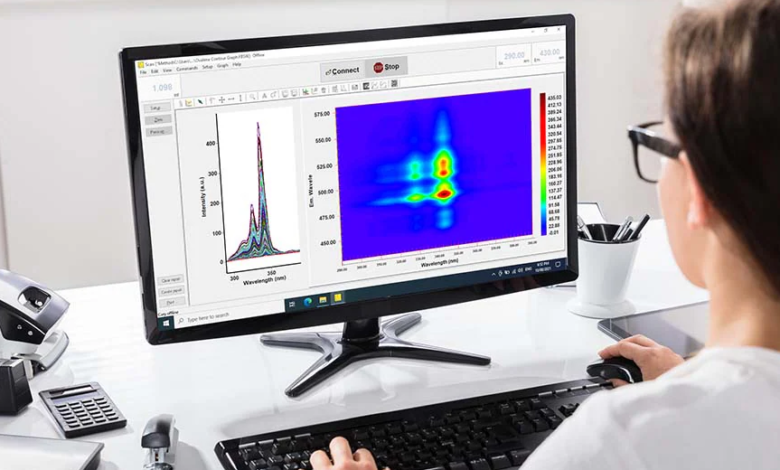Understanding the Fluorescence Spectrophotometer

Importance of Fluorescence Spectrophotometers in Research
A fluorescence spectrophotometer is a critical instrument for laboratories engaged in chemical, biological, and pharmaceutical research. This equipment measures the intensity of emitted light from a sample after excitation by a specific wavelength. The data collected provides detailed information about molecular structures, concentrations, and interactions.
Researchers rely on a fluorescence spectrophotometer to conduct accurate analyses in fields such as biochemistry, molecular biology, and environmental testing. High-quality instruments ensure precise and reproducible results, making them essential for modern laboratories.
Principles of Fluorescence Spectroscopy
The operation of a fluorescence spectrophotometer is based on the principle of fluorescence. When a molecule absorbs light at a specific wavelength, it becomes excited and emits light at a longer wavelength. The spectrophotometer detects and measures this emitted light to analyze the sample.
Understanding the excitation and emission spectra of a sample allows scientists to identify compounds, determine concentrations, and study molecular interactions. The sensitivity of the fluorescence spectrophotometer makes it suitable for detecting low concentrations of analytes in complex mixtures.
Applications of Fluorescence Spectrophotometers
Fluorescence spectrophotometers have a wide range of applications. In biochemistry, they are used to study proteins, nucleic acids, and enzymes. Environmental laboratories use them to detect pollutants and contaminants in water and soil. Pharmaceutical research relies on fluorescence measurements for drug development, quality control, and formulation analysis.
Additionally, fluorescence spectrophotometer a key role in clinical diagnostics, such as detecting biomarkers in blood or urine. Their ability to provide rapid and sensitive measurements makes them invaluable for both research and practical laboratory applications.
See also: Elizabeth Kinder Ready Tutoring Introduces “All About Friendship” Program, Helping Children
Features to Consider When Choosing a Fluorescence Spectrophotometer
Selecting the right fluorescence spectrophotometer depends on several factors. Sensitivity, wavelength range, and resolution are key performance indicators. Advanced instruments offer features such as multiple excitation and emission channels, automated sample handling, and software for data analysis.
Durability and reliability are also important, as laboratory environments require instruments that can operate continuously without performance degradation. Choosing a spectrophotometer from a reputable supplier ensures access to high-quality equipment, technical support, and maintenance services.
Maintenance and Calibration
Regular maintenance of a fluorescence spectrophotometer is essential for consistent performance. Calibration using standard reference materials ensures that measurements remain accurate over time. Routine cleaning, alignment of optical components, and software updates contribute to the longevity and reliability of the instrument.
Suppliers often provide maintenance contracts and technical support to help laboratories maintain optimal performance. Proper handling and adherence to manufacturer guidelines prevent contamination and instrument damage.
Advancements in Fluorescence Spectrophotometry
Modern fluorescence spectrophotometers incorporate technological advancements to enhance sensitivity, speed, and ease of use. Features like automated sample loading, real-time data processing, and integrated software allow for high-throughput analysis.
Innovations such as time-resolved fluorescence and fluorescence anisotropy expand the applications of spectrophotometers, allowing researchers to study dynamic processes and molecular interactions in greater detail. These advancements improve accuracy, reproducibility, and the scope of experimental possibilities.
Comparing Fluorescence Spectrophotometers with Other Techniques
While fluorescence spectrophotometry offers high sensitivity and specificity, it is often complemented by other analytical techniques. UV-visible spectroscopy, mass spectrometry, and chromatography provide additional insights into molecular structure, composition, and purity.
A fluorescence spectrophotometer is particularly advantageous when detecting low-concentration analytes or monitoring biological reactions. Its combination with other techniques enhances analytical capabilities, making it a versatile tool in laboratory workflows.
Cost Considerations and Supplier Selection
The cost of a fluorescence spectrophotometer varies based on features, sensitivity, and manufacturer. While initial investment may be significant, high-quality instruments provide long-term value through reliability, reproducibility, and advanced functionalities.
Selecting a reputable supplier ensures access to technical support, maintenance services, and calibration assistance. Suppliers with established track records in laboratory equipment provide instruments that meet international standards and industry requirements.
Sustainability and Laboratory Efficiency
Modern fluorescence spectrophotometers are designed to optimize energy use and reduce waste. Features such as efficient light sources, automated processes, and low-consumption components contribute to environmentally responsible laboratory practices.
Efficient instrumentation not only supports sustainability but also reduces operational costs and increases laboratory productivity. Reliable instruments with low downtime improve overall workflow efficiency.
Conclusion
A fluorescence spectrophotometer is an essential tool for laboratories engaged in chemical, biological, and pharmaceutical research. Understanding its principles, applications, features, and maintenance requirements helps laboratories choose the right instrument for their needs.
Investing in a high-quality fluorescence spectrophotometer ensures accurate measurements, reproducible results, and long-term reliability. Partnering with a reputable supplier provides technical support, calibration services, and access to advanced technologies, enabling laboratories to conduct precise and innovative research with confidence.





